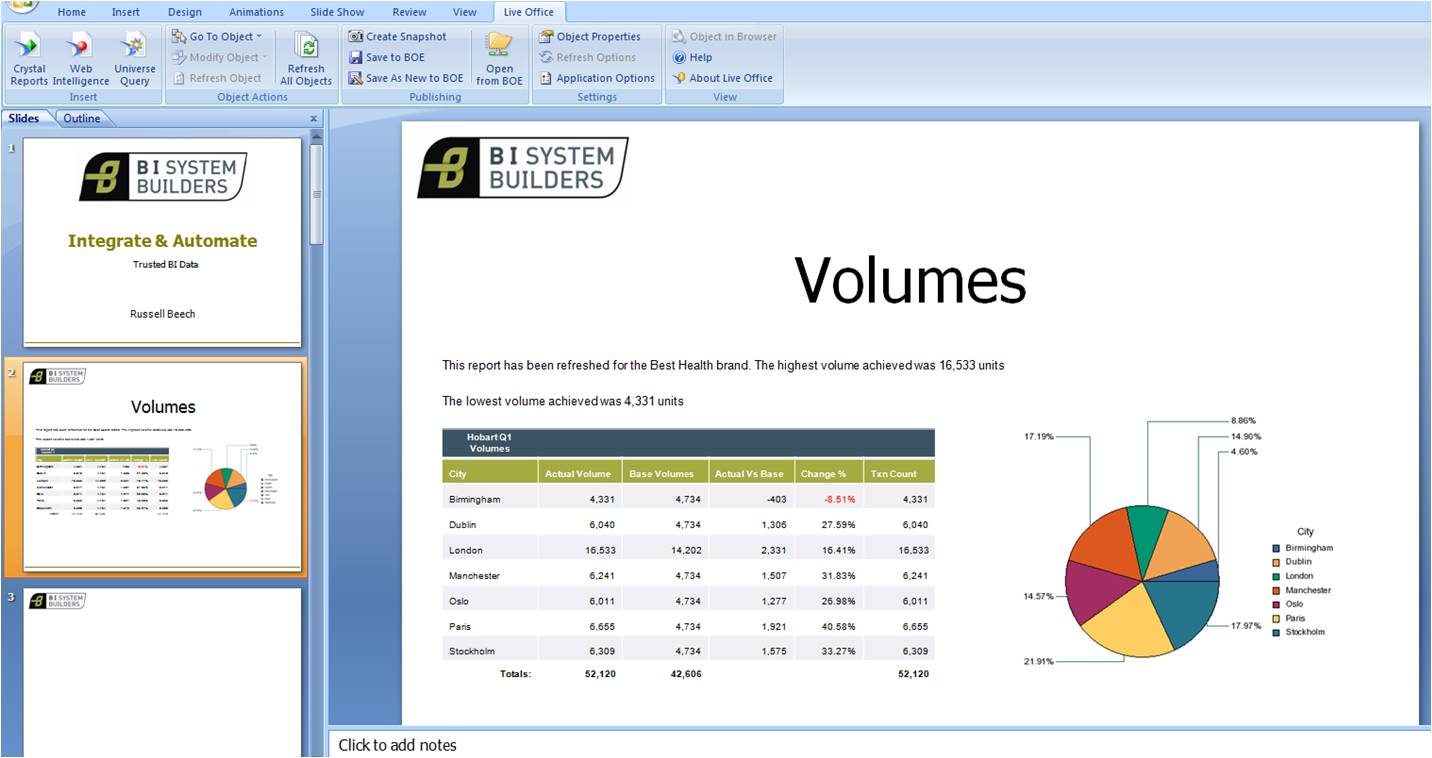
The acquisition of BusinessObjects by SAP paved the way for a very welcome tighter integration between the two softwares. One of the challenges coming out of that tighter integration was the performance of Web Intelligence against an OLAP universe generated on SAP cubes and BEx Queries. The reality of SAP project implementations was that SAP Netweaver experts designed large cubes and large queries. And why not; after all this was the OLAP world?! Large SAP cubes and large BEx Queries make sense for OLAP.
However, Web Intelligence is not an OLAP tool, it builds a cache of data referred to as a ‘microcube’. Note the word ‘microcube’. Attempting to pass large volumes of data from an OLAP query to the microcube could cause the Web Intelligence engine to perform poorly or crash. BISB have observed this on numerous occasions when undergoing performance testing at client site. Problems with the version of Explorer dependent up on the Web Intelligence engine have also been observed for the same reason.
But failing to process large volumes of data was not a weakness of Web Intelligence. On the contrary, Web Intelligence was designed for smaller, fast, ad hoc queries. Users experiencing problems with large volumes of data and Web Intelligence could consider the use of Crystal Reports. Crystal Reports uses a different cache infrastructure to Web Intelligence.
The above mentioned data volume issues have made the SAP BI 4.0 road map very welcome. Using the new Data Federator connectivity through the SAP BusinessObjects BI 4.0 universe means that the SAP MDX engine (OLAP) is bypassed. This removes one of the big issues of the SAP OLAP data volumes, namely MDX crossjoins. Other development means that the BI 4.0 universe now has connectivity to SAP HANA. If you have the budget available this makes SAP HANA highly desirable for Big Data and Analytics.
Finally, ardent OLAP users that cannot live without a cube have not been left out in the cold. BI 4.0 ushered in the end of the Voyager OLAP tool, replacing it with the new Advanced Analysis for OLAP tool.
The view expressed in this article is from BISB and not necessarily SAP. Russell Beech was Senior Analyst in the BusinessObjects Analytic Applications Division for almost six years. Check out Web Intelligence In Under Three Minutes here.





You must be logged in to post a comment.